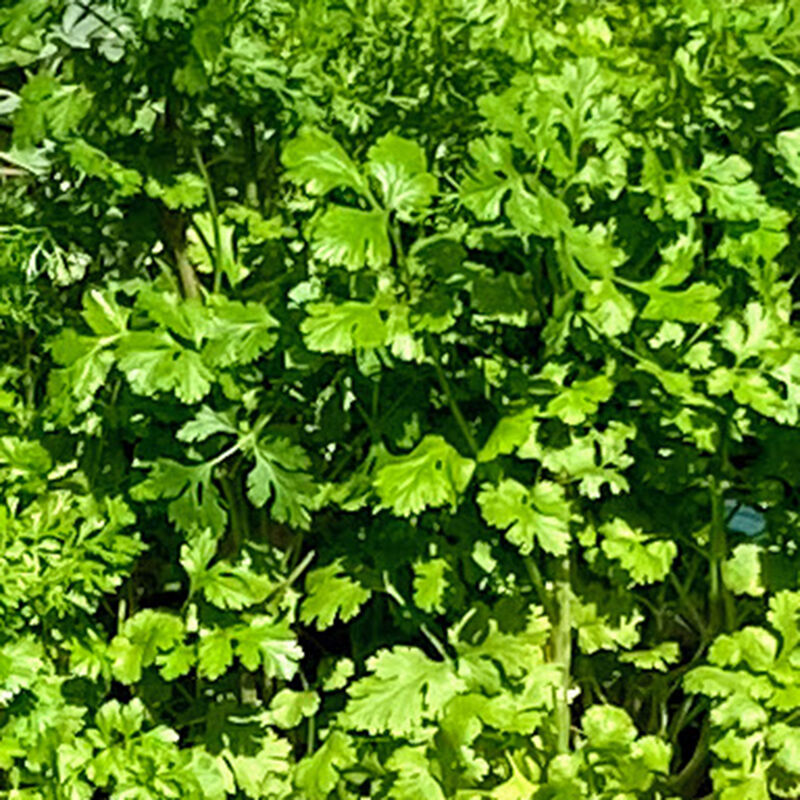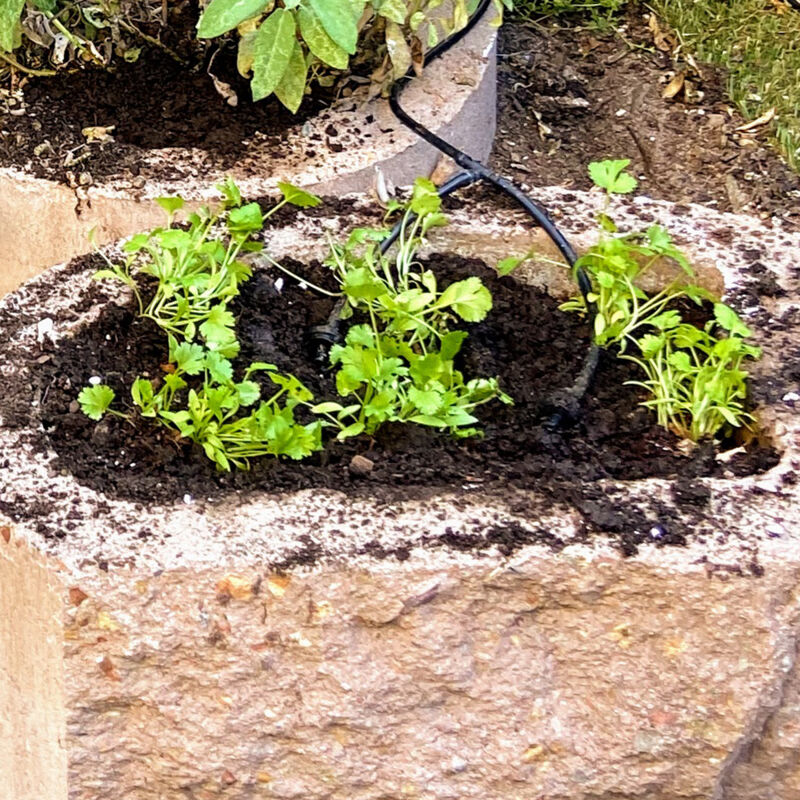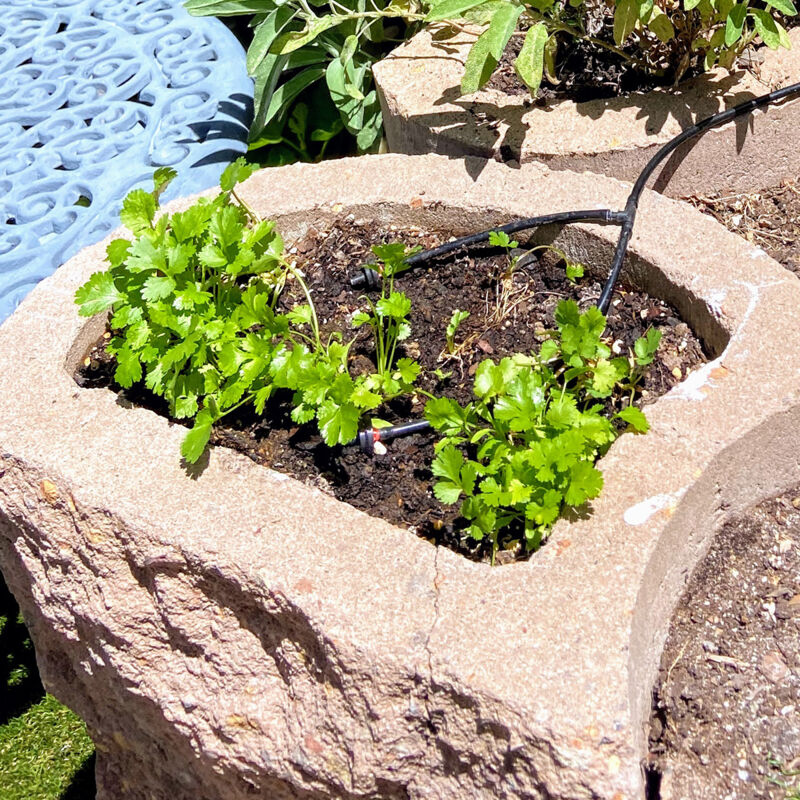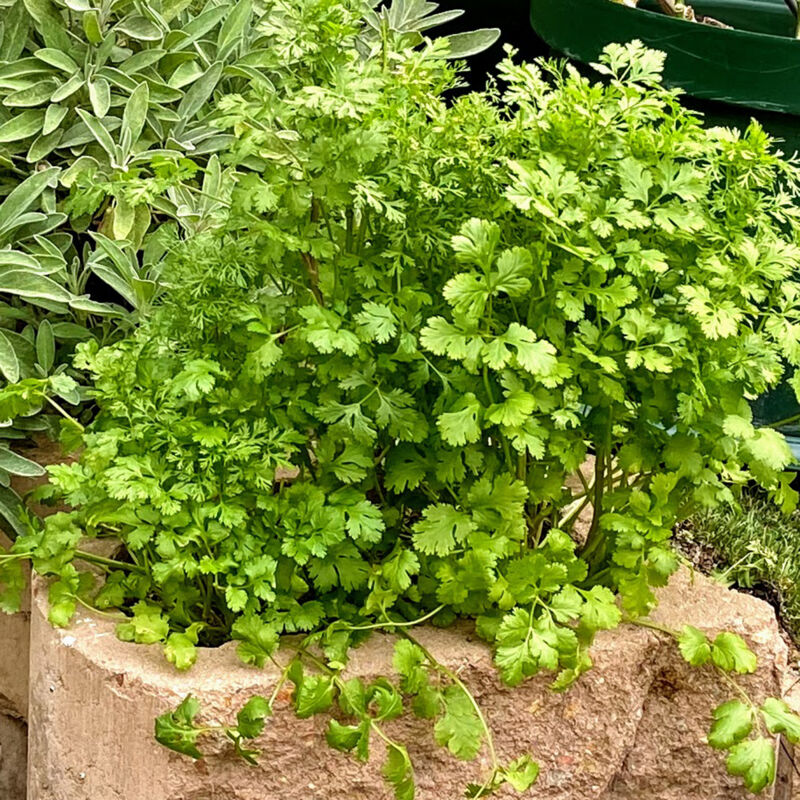Coriander

Cilantro, AKA Coriander Coriandrum sativum. Family: Umbelliferae
History
Coriander is one of the oldest herbs and spices on record. The herb was mentioned in the Bible, and the seeds have been found in ruins dating back to 5000 B.C. and has been cultivated for at least 3000 years.
It was widely used throughout the ancient world. The Romans used it as a meat preservative and aphrodisiacs.
Coriander grows as a native plant around the world, including Europe, Asia, Africa and in the Americas.
Coriander can refer to both a herb and a spice. Although the term coriander is used in much of the world about its leaves and seeds, it generally refers to the dried cilantro seeds used as a spice both in whole form and ground.
Cilantro leaves and coriander seeds taste very different and cannot be substituted for each other in recipes.
Appearance
Corriancer is a member of the parsley (Apiaceae ) family. It's an annual plant that grows on slender green stems. The plant can grow up to three feet tall and the leaves resemble parsley leaves. When coriander flowers, it produces white flowers, with a hint of purple, and round, light brown seeds. These seeds can be harvested and used as spices.
Seeds to Seedlings
Cilantro is difficult to transplant; it grows from a taproot. Sow in fall in full sun in moderately rich, well-draining soil with a pH of 6.6. Set seeds ½ of an inch deep. Mulch seedlings when they emerge, then thin to about 2 to 6 inches apart. Sow seeds every two weeks for a continuous harvest.
Growing productive plants
During the year, I grew cilantro from seeds and seedlings purchased in a nursery.

January 28

February 7

March 28
Water
The plants were regularly watered three times a day using my computerized watering system (see the water section). In dry weather, I gave them an extra five minutes at midday.
Light
The plants that I grew in full sunlight in the centre of a cement block did better than those I grew under in my shade cloth system.
Fertilizer
Due to the soil structure and preparation, it was unnecessary to provide any additional fertilizer during the growing season..
Pruning
Frequent cuttings of the leaves can extend the harvest, but eventually, since the plants are annual, they will form flower heads. However, if they are removed soon after they appear, the plants continue to thrive as shown in the pictures.
Companion planting
Annual Cilantro/coriander enhances anise, harms fennel
Impact on insects
Repels aphids, Colorado potato beetles, and spider mites and attracts bees
Harvesting
The leaves can be removed at any time for culinary use. If you wish to harvest the seeds, when the plants form flower heads, stop cutting leaves.
When the seed heads start to turn brown, cut whole stems, place them in a paper bag, and hung them in a warm place. The seeds will drop off into the bag as the plant dries. When seeds are completely dry, store them in an airtight container away from heat and light.
Culinary
Using coriander is different from because their flavors and textures are completely different.
In general, coriander seeds are toasted before using, and ground coriander is used as a spice to cook things like curry and in baked goods. Cilantro is often used as a garnish or added at the last minute to flavor foods ranging from stir-fries to tacos.
Just like their cooking techniques are different, so are the storage practices of coriander and cilantro.
Most coriander is dried and should be kept in an air-tight container at room temperature.
Cilantro is typically stored cold, either in the refrigerator or freezer.
The taste of cilantro is described as lemony, tart and citrusy. One of the most versatile herbs, cilantro adds distinctive flavour to salsas, soups, stews, curries, salads, vegetables, fish, and chicken dishes.
The seed can be used in many dishes, both sweet and savoury, including curries, chutneys, cakes, biscuits and marmalade.
Seeds can be added to soups and vegetable dishes but should be used sparingly, as they are strong tasting.
Coriander leaf (cilantro) can be used in salads, sauces and hot dishes or used as a garnish, like parsley.